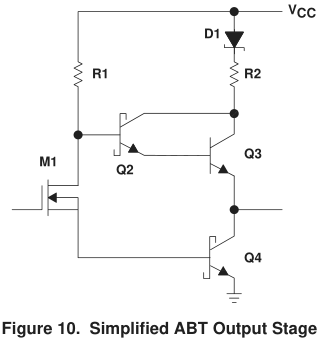Hello team,
I have a question on the basic structure of LVT family regarding the ICC, IC's supply current. I checked AVC(Advanced Very-Low-Voltage CMOS) is based on CMOS logic and LVT (Low-Voltage BiCMOS Technology) is based on BiCMOS(TTL+CMOS) logic.
I can see ICC is different depending on output status as attached. For AVC family, ICC is same regardless of output status. What's the difference between CMOS family and this BiCMOS family that cause this ICC difference?
Thank you for your kind answer.



